 To launch labAlive simulation applications you need a Java Runtime Environment supporting Java Web Start on your system. Here you can get more information about installing the right Java version.
To launch labAlive simulation applications you need a Java Runtime Environment supporting Java Web Start on your system. Here you can get more information about installing the right Java version.

In this scenario, a pulse is sent and shall be detected at the receiver. It might represent a symbol for digital transmission or a radar pulse. The received pulse might be almost hidden in noise.
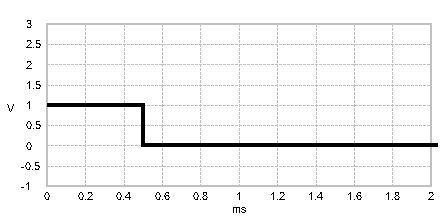 Transmitted pulse
|
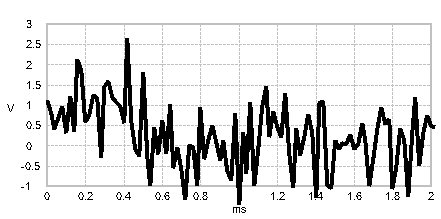 Received pulse
|
It is a matter of detecting the pulse in an optimal way. Which receive filter achieves the best signal-to-noise ratio? Compare different combinations of sender side pulse shapers and receiver side filters.
Start
This simulation provides different filters for pulse shaping and receive filter. These are for instance:
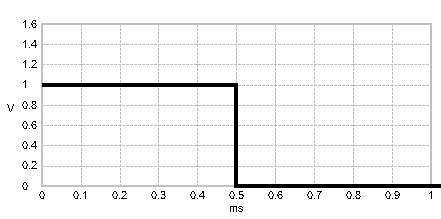 Rectangular pulse
|
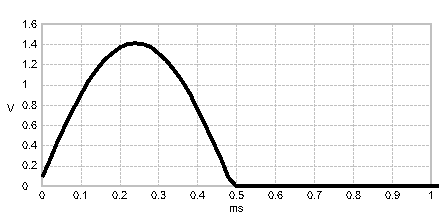 Half-sine pulse shaper
|
To make results comparable, all filters are power-normalized. This means, the pulse energy is equal for all of them.
Determine the energy E of both pulses!
Pulse energy:
Noise
Now let's look at the noise. White Gaussian noise is added (AWGN channel). Determine the noise power of the detected signal!
- Switch off the digital signal source. Then the signal d(t) consists only of the noise part.
- Measure the signal power using the power meter - right click on d(t).
- Speed up the simulation by pressing F3 several times and see how the power converges to a value.
Noise power:
Does the noise power differ for the different filters?
Signal
Now let's look at the signal. The sent pulse passes the receive filter. Determine the maximum amplitude of the detected signal!
- Switch off the noise source. Then the signal d(t) consists only of the signal part.
- Regard the oscilloscope showing the detected signal.
- The best signal power is achieved when the signal d(t) is sampled at its maximum amplitude.
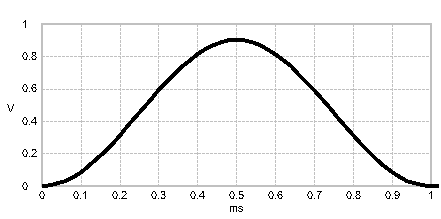 Detected signal for a pulse - receive filter combination
|
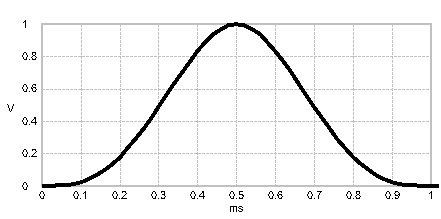 Detected signal for another pulse - receive filter combination
|
Which combinations of pulse shaper and receive filter show the maximum amplitude?
What is the corresponding signal power of the optimal sampled detected signal d'(t)?
Signal power:
Signal-to-noise ratio
The signal quality is measured as the ratio of signal power to noise power.
Determine the SNR for the best filter combinations - using the measured values!
Signal-to-noise ratio:
The receive filter achieving the best SNR for a given sender side pulse shape is called 'Matched filter'. How can the SNR be calculated using the given energy of the sent pulse and the noise power-spectral-density N0? Find out the formula.
Signal-to-noise ratio:

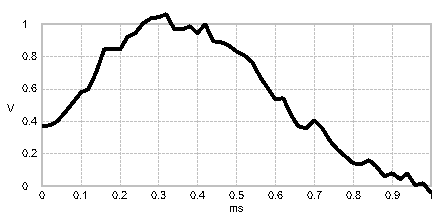 Detected signal for a pulse - receive filter combination
|
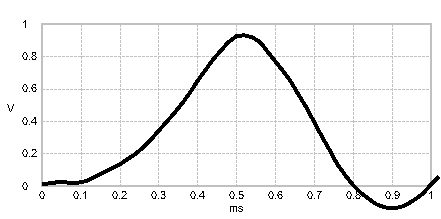 Detected signal for another pulse - receive filter combination
|
